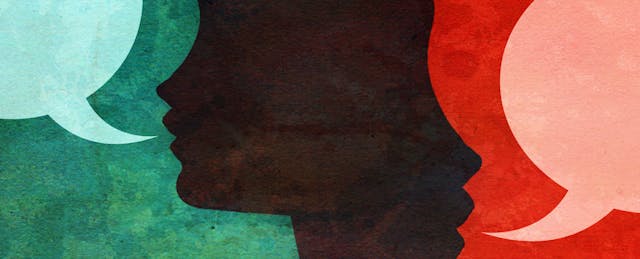Back-to-school is an exciting time for many students and educators, but given the political and racial discord this past weekend in Charlottesville, Va.—which left three people dead and at least 19 others wounded—teachers are taking it upon themselves to prepare for a tough dialogue on race, violence and equity this school year.
To help educators address the recent events, Melinda D. Anderson, a contributing writer for the Atlantic, introduced the hashtag #CharlottesvilleCurriculum on Twitter last Sunday. Through it, she and others are encouraging educators to share resources to that could be useful to start conversations on everything from the history of racism to conversational tools to talk about the subject.
Researchers point out that downloading a resource or curriculum model is only one step, however. Maureen Costello, the director of Teaching Tolerance at the Southern Poverty Law Center in Montgomery, Ala., says educators can’t start these conversations without first doing some retrospective analysis of their own biases.
Why look to your own bias?
“Teachers have to acknowledge that we all have biases,” Costello tells EdSurge. “Any teacher who is teaching students from diverse backgrounds has to do some serious work about the assumptions they make about what is normal. If you walk into a classroom with a lot of ideological baggage, you are not going to serve all those students in front of you.”
Bias is a problem that researchers say educators can completely overlook. In 2016, professors from John Hopkins University released a study that showed white teachers were 30 percent less likely than black teachers to predict a black student will pursue a four-year degree. Such bias meant that teachers might not encourage their black students or offer them college-oriented materials.
To explain why and how that happens, Costello notes that bias in education begins during a future teacher's childhood.
“Examine how you learned about race, what were the first messages you got,” Costello explains. “What do you believe as a child that you don’t believe now? Practice having the conversation with other adults.”
Anna Piskun, a high school senior from California, says teacher bias can alienate students and make the classroom a contentious environment. Pointing to her own high school experience, she notes that teachers who did not create classroom environments where everyone felt safe to express differing opinions might have pushed some student to extremes.
“My teacher was very vocal about her support of Hillary and the Democratic party and made it a point to denounce the Republican party as a whole almost every class,” says Piskun. “While I am a Democrat, I could definitely understand how people would feel pressured to stay silent and not engage in our class discussions. I wholeheartedly believe that this sort of alienation can lead to further frustration and hatred.”
What if bias is not addressed?
Costello notes that educators who do not take the time to evaluate themselves before discussing race and equity issues and then create safe spaces within their classrooms for students to have conversations about race risk losing their student’s trust. Students need to understand that educators sympathize with their experience, even if that experience is different from the educators. This becomes increasingly important when educators are teaching students from different racial, social economic and cultural backgrounds.
“The failure to address what is happening in the world sends the message that the picture of the world you are sticking with is not real. If students have people in front of the room who are insisting that the world is not the world students are experiencing, why should they believe anything that you are saying?” asks Costello. “School is the place where we learn to live with each other. If we don’t talk about the most difficult things in school, where do kids learn how to do it?”
How can educators check their own biases?
The most powerful self-reflection beings with humility, notes Costello. “Our philosophy is you have to be able to raise questions on difficult topics and be vulnerable and truthful yourself—about what you know and what you don’t know,” she continues. “That is particularly important for teachers, most of whom are white women when they start talking about race. They have to acknowledge that their experiences are limited.”
One of the places Costello says educators can begin to analyze their own biases is through online quizzes—noting the need for privacy and a chance the reflect. For example, The American Dream Score takes people through a series of questions such as, “Was your neighborhood safe growing up?” At the end of the quiz, the user’s American Dream Score is revealed, reflecting the number of life factors working in the user’s favor.
For more resources on creating safe classrooms spaces, check out the #CharlottesvilleCurriculum hashtag or visit the Teaching Tolerance website where Costello’s team just released a document titled The Moment, educating teachers on the alt-right movement and how to identify and respond to students who are susceptible to its messages.


